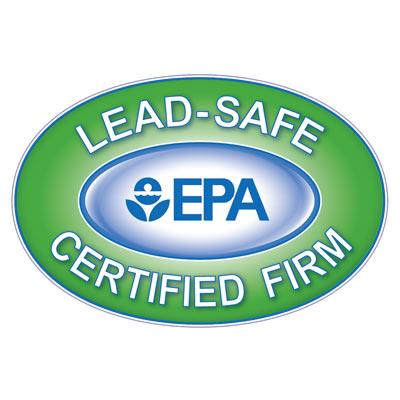Lead Concerns During Renovations for a Healthy School Environment
Certified Renovation and Lead Dust Sampling Technician Firms
 Search for lead renovation, repair and painting firms certified by EPA as well as companies whose certification has been suspended, revoked, modified or reinstated.
Search for lead renovation, repair and painting firms certified by EPA as well as companies whose certification has been suspended, revoked, modified or reinstated.
On this page:
- Why It's Important
- What You Can Do
- EPA and Federal Partners
- National Organizations
- Regional, State and Local Resources
Why It's Important
- The most common lead hazards in schools are lead-based paint, lead dust and contaminated soil. Other lead sources are older plumbing fixtures, vinyl mini-blinds, painted toys and furniture using lead-based paint.
- Lead is highly toxic and exposure can be dangerous, especially for children six or younger.
- Low levels of lead in blood have been associated with behavioral problems, learning disabilities and impaired growth. Very high blood lead levels can cause severe neurological problems such as coma, convulsions and even death.
What You Can Do
- Make lead safety part of the school's renovation plan, including worker training beforehand and testing during and after renovation. Hire a lead-safe certified firm.
- Implement a program for reducing lead in drinking water as part of the school’s overall plan for reducing environmental threats.
- EPA's National Lead Information Center and Hotline provides information on hazards associated with lead, as well as training, brochures and links to regional sources. Call the Lead Hotline at (800) 424-LEAD [5323].
EPA and Federal Partners
- EPA's 3Ts for Reducing Lead in Drinking Water in Schools are training, testing and telling. The toolkit provides simple strategies to manage the health risks of lead in schools and drinking water.
- Drinking Water in Schools & Child Care Facilities provides basic information on drinking water and lead in drinking water and health effects. It also describes laws and regulations to control lead in drinking water and offers guidance and tools to address it.
- The Office of Healthy Homes and Lead Hazard Control in the U.S. Department of Housing and Urban Development is dedicated to providing information on how to control lead hazards in the home. The information could also be applied to school facilities.
- The Centers for Disease Control has information about possible dangers of lead in toy jewelry, such as charm bracelets, pins, or other small pieces that children might wear to school. These small pieces if swallowed can lead to serious health problems or even death from lead contamination.
The following links exit the site Exit
National Organizations
- Lead Safety in Schools: Resource List by the National Clearinghouse for Educational Facilities offers an annotated list of links, books and journal articles on lead hazards in paint, soil and water; managing lead in schools; and lead safety and school modernization.
- Lead Paint is addressed on the Campus Environmental Resource Center's website. The website provides a great library for staff, administrators or faculty who are looking for resources to better understand environmental regulations, find relevant contacts, seek model practices, track news or build and manage better environmental programs.
Regional, State and Local Resources
- Sensible Steps for Healthier School Environments by EPA provides an overview of issues related to lead in schools.
- Lead-Safe Schools Project at the University of California–Berkeley trains and certifies construction workers in California on occupational lead exposure, symptoms of lead poisoning, how to abate lead hazards, how to use respirators and what other precautions to take to prevent lead exposure. The website includes publications and curricula.
- Lead-Safe Renovation, Repair and Painting (RRP) Rule for Schools and Child Daycares on the Massachusetts Office of Labor and Workforce Development website describes the state rule and links to helpful materials to address lead safely.
